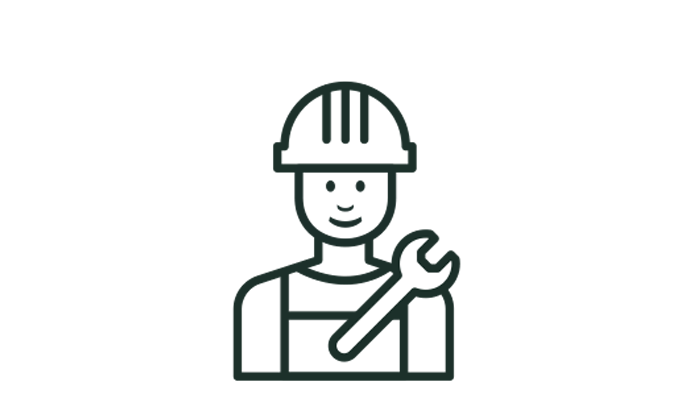Submit your diversion request
Please ensure you submit as much detail as possible including new lines and levels of site, any development proposals, or any hazards we should be aware of.
There are pipelines all over the country that help transport gas safely.
Our pipeline covers 82,000 miles placed end to end, and makes the supply of vital resources to homes and businesses simple for those needing them. However, our network of pipelines can often be affected by work that needs to be carried out nearby.
It is important for safety reasons that you let us know about your planned works well in advance, as the new location of a diverted pipe will need to comply with proximity rules and other safety policies.
If you are unsure whether our assets are within the area of your works, please submit a 'Dial before you dig' enquiry. If our assets are identified within your area of works, please contact us on 0800 074 5788 or at [email protected] to determine if a diversion is required.
When you’re doing any sort of excavation work, from building a small conservatory through to things like road and motorway work or the building of new houses, the diversion of gas pipes may be a necessity. Here, we’ll cover some more information around gas diversions.
Apply for a Diversion here

Here are the steps that we will take you through during the diversions process. Don't worry, we’ll stay in touch along the way to make sure it's going smoothly and you’re happy with everything
Please ensure you submit as much detail as possible including new lines and levels of site, any development proposals, or any hazards we should be aware of.
If required, we will meet you on site as soon as possible to discuss your plans and requirements
If you requested a C3 estimate, you will need to let us know if you wish to progress to a C4
The work will have to be tendered and awarded to a Local Delivery Partner (LDP) which are management by our Construction Management Organisation (CMO). A date for the diversion will be advised taking into account resource avaibility and any restrictions such as Highway Permits.
Once we're finished the area will be reinstated and final accounts submitted.
C2 (preliminary enquiries): The utility companies are required to supply information regarding the general position and nature of apparatus from their records and draw attention to any limitations in the quality of this information. If you have a query about the location of our assets please email our plant protection team [email protected]
C3 (initial design and budget estimates): requests for initial budget cost estimation are submitted to the utility companies along with preliminary project designs. this includes the extent of the proposed works with potential diversion routes indicated for existing apparatus (ie, mitigation measures) and budget estimates of the measures (as assessed at preliminary design stage).
C4 (detailed design and estimates): requests for detailed estimates are submitted to utility companies along with final design details of the proposed project, working drawings and an outline programme. Stage C4 is a very important stage as it establishes in detail what the necessary utility mitigation measures are, who they are to be undertaken by and form the basis of the Official Works Order.As of April 1st 2021 C4 requests are now covered by our Guaranteed Standards of Performance. For more information please visit https://www.ofgem.gov.uk

A gas diversion is carried out to do exactly what you'd expect: diverting part of the gas pipeline away from its current route in order to facilitate safe working. Any gas pipe that is tampered with represents a hazard as it can easily ignite and cause an explosion.
The route of underground gas pipes can be unclear, especially as pipes don’t always travel in a straight line and can change direction.
Before carrying out any work whatsoever, it’s important that you contact us to let us know about your planned works and find out whether a gas diversion needs to be put in place. Before contacting our diversions team, you’ll need to know:
Once our team have assessed your plans, someone will be in touch to discuss in further detail. If we do decide that a gas pipe diversion is necessary, this may also involve a site visit to ascertain in further detail what work needs to be carried out.

There’s no definitive way to say how long a gas diversion will take due to the complex nature of a diversions project and the fact that some require much more time than others. The amount of time we’ll need to assess, plan and carry out any necessary work depends on the scale of the development and amount of pipework that needs to be moved.
It’s vital that the plans you submit from the start are as accurate as possible so there are no unforeseen delays to the diversions process.
Customer Enquiries
0800 389 8000Connection Enquiries
0800 074 5788
A diversion is where a customer would like either a gas pipe moving/lowering, usually due to building or civil engineering works that are effecting the current position of the gas main. Mains abandonment works also come under the diversions banner where a gas main that feeds more than 2 meters is no longer required.

For any changes required before a estimate is accepted, please contact the assigned design officer. Once a scheme has been accepted, please discuss any changes with our Construction Management Organisation, CMO.
If a site visit is required then you will be contacted by the relevant part depending at what stage you are at on within the Diversion process.
A C3 is a budget estimate and a C4 is a more detailed estimate. You can’t pay against a C3, if you wish to proceed with a project a C4 is required and payment required up front. The C4 is still an estimate and final costs are used to either refund or invoice any difference from the C4.
A service is a gas pipe that feeds no more than 2 meters.
A main is a gas pipe that feeds more than 2 meters or a gas pipe that transports gas around the local area/country.
A riser is a gas pipe that runs up the outside or inside of a building, typically on flats or similar buildings.
Factors that determine cost and duration are: length of diversion, pipe size to be laid/connected to/abandoned, surface to be excavated, depth of existing mains, traffic management requirements, specialist quotes, team size required and geographical location.